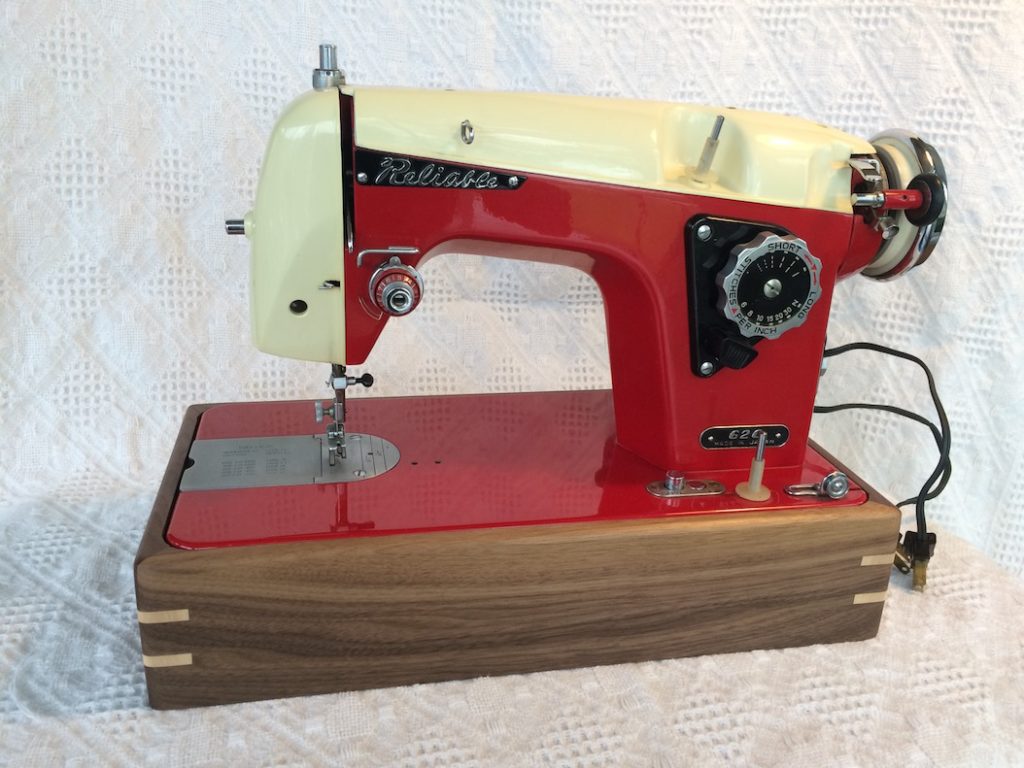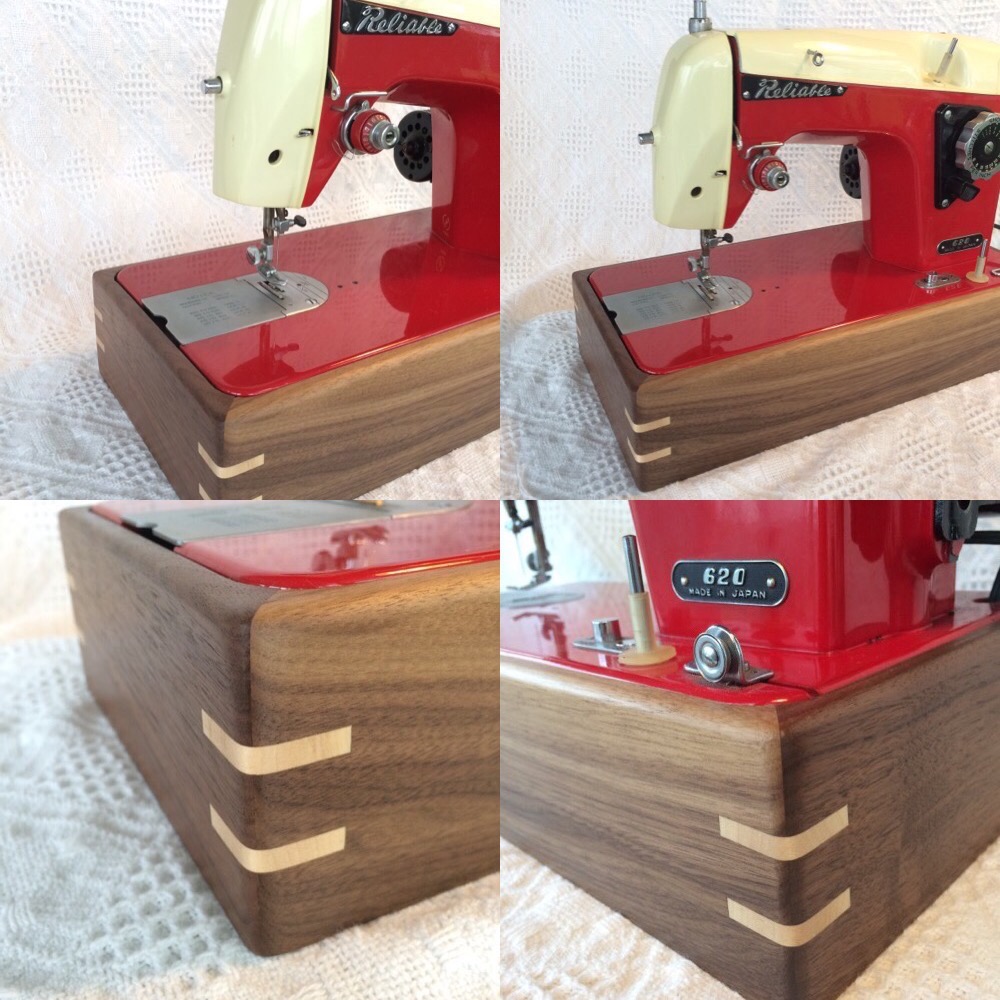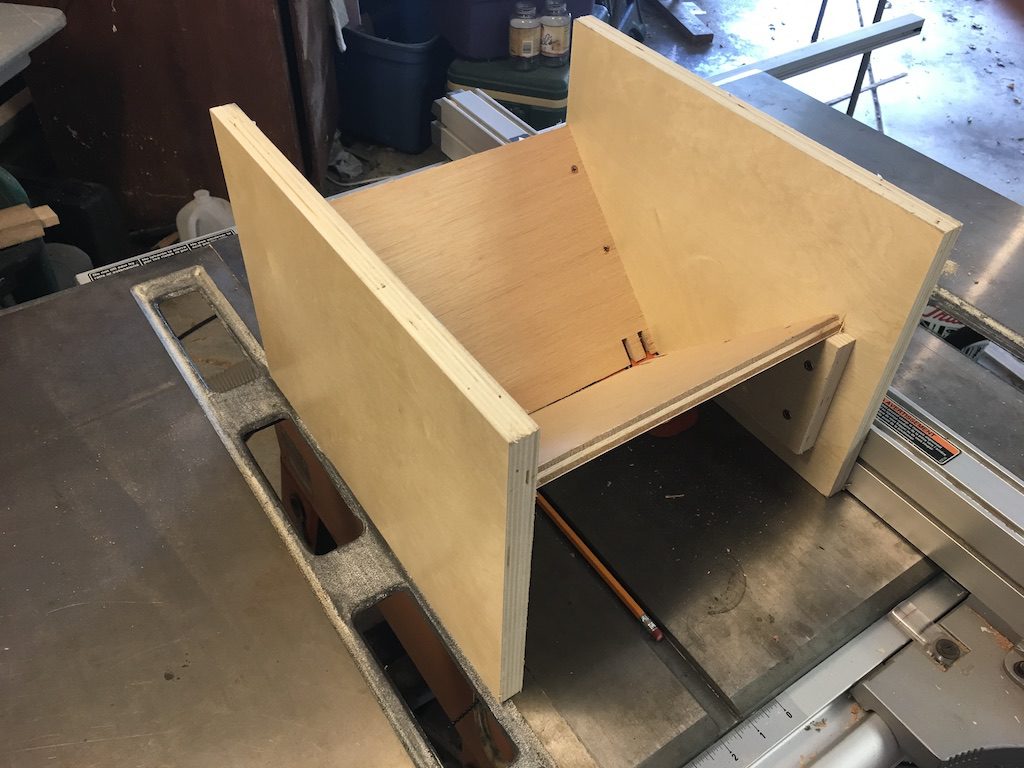
What do you do when you have a collectible sewing machine that you want to show off? You have a custom sewing machine stand built for it of course.
One of my clients is an avid sewer and collector of sewing machines. This particular model was originally purchased by the University of Nebraska-Lincoln’s “home economics” department (thus the Husker red & white) back in the 1960’s (if I remember the story correctly). At some point, as happens in time, the equipment was upgraded and my client managed to land one of these in her collection.
These old machines have a special base that is intended to fit into a sewing table. But for collectible items like this one, most choose to build or buy a display base.
About the sewing machine stand
This base is simply a box built with miter joints and reinforced with splines. In this case, the box itself is walnut and the splines are maple creating quite a contrast and giving the box a little more visual interest. The top edge was routed to receive the base, and the entire box was finished with several coats of a satin wipe-on polyurethane. The corners were also rounded with the router to better match the rounded corners of the machine’s base.

What I learned:
Don’t drop your saw blade.
In switching between my regular blade and my dado, I manage to drop the blade on my cement garage floor damaging one or two teeth. DO NOT attempt to use a blade on your table saw after you have damaged the teeth. You will get some really bad results and/or kickback.
Building a spline jig.
In order to cut the splines, you have to build a spline jig for the table saw that will hold the sides of the box at 45 degrees so that the resulting cut is even on both sides of the miter. I then ran the box through the table saw set up with my dado blade.

